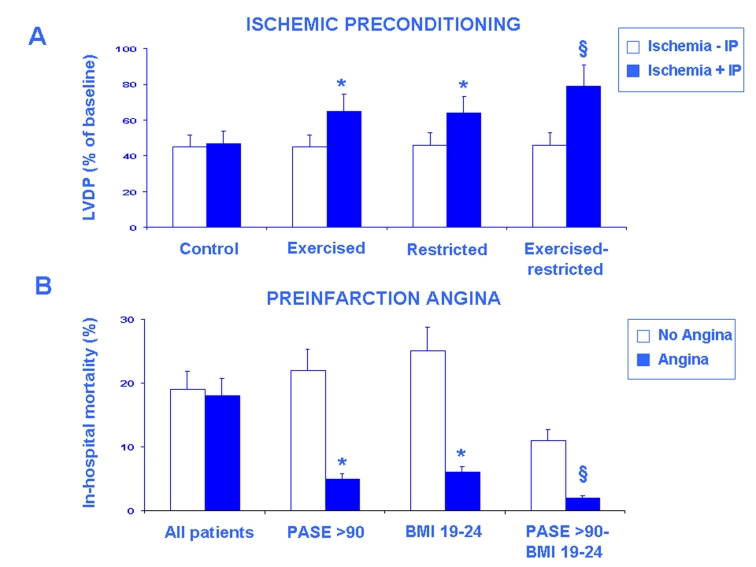Fig. 4:
The restoration of the age-related of IP by exercise training and caloric restriction in the isolated and perfused rat heart is shown in panel A. Bar graphs show the recovery of left ventricular developed pressure (LVDP) (% of basal) at the end of reperfusion in sedentary ad libitum fed (control), trained ad libitum fed, sedentary food-restricted and trained- and food-restricted senescent hearts subjected to ischemia (20 min) and reperfusion (40 min) (Ischemia - IP) and pre-treated with preconditioning stimulus of 2 min followed by 10 min of reperfusion (Ischemia + IP). LVDP recovery was similar in the absence and the presence of IP. Exercise training and caloric restriction restored IP (p<0.01 vs. Control) and this effect was more evident in hearts from trained- and food-restricted rats (§p<0.001 vs. Control). The preservation of the age-related reduction of the cardio-protective effect of preinfarction angina, a clinical equivalent of IP, by physical activity evaluated by Physical Activity Scale for the Elderly (PASE) score and by a normal body-mass index (BMI) is shown in B. Bar graphs show that in-hospital mortality percentage was similar in elderly patients without and with preinfarction angina but it was lower in elderly patient with preinfarction angina with high PASE score (>90) and normal BMI (19–24) (§p<0.05 vs. all patients). This effect was more evident in elderly patients with the highest PASE (>90) and the normal BMI (19–24) (*p<0.01 vs. all patients) (with permission, Abete P et al., 2010) [56].

